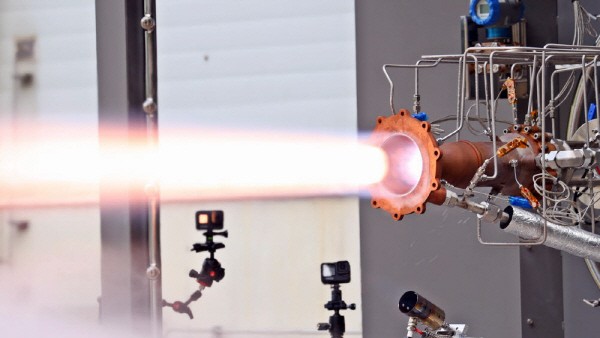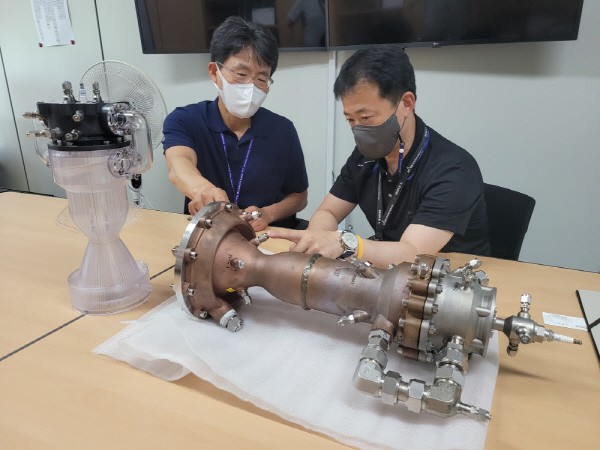Domestic research to save production cost and time by producing engine components for projectiles with 3D printing is seeing results. Korea Aerospace Research Institute (KARI, President Sang-ryul Lee) has succeeded in manufacturing some components, and performance testing isnow underway.
KARI researchers including Byung-jik Lim, Senior Researcher of the Future Launcher R&D Program OfficeandHa-young Lim, Senior Researcher of the Projectile Propulsion Control Team, have succeeded in the regenerative cooling combustion test by manufacturing a 1-ton liquid methane (LNG) and liquid oxygen engine combustor using metal 3D printing technology, announced on the 19th.

The researchers used 'Selective Laser Melting (SLM)', a technique that partially melts metal powder to shape it with a laser. They used copper and stainless steelin this prototype, and using copper for additive manufacturing of a combustor is rare abroad and is also the first time in Korea.
Prototype production was completed at the end of last year, and combustion tests using the prototype are now in progress. The components made by 3D printing were not significantly different strength from the existing materials processedmechanically in terms of strength, according to the result of specimen unit analysis. Rather, some other characteristics were found to be superior.
The biggest advantage of 3D printing is the short production period. 3D printing was used to reduce the production period of several months by machining to one-third. No additional machining process is unnecessary, except for some surface treatment, heat treatment, and interface (bonding surface) machining. Complex internal components were individually manufactured and assembled and joined in the traditional manufacturing process, but they can be integrated in 3D printing process.
This prototype is the result of prior research on innovative manufacturing technology for the future launch vehicle in 2020, which started from the research on next-generation low-cost launch vehicle in 2019. The research team is verifying the performance of the two-stage small projectile through a prior technical research. This is a research achievement of realizing an engine using a relatively low-cost 3D printing technique and low-cost liquefied natural gas (LNG) and liquid oxygen propellants.
Based on this achievement, KARI researchers plan to challenge the manufacture of other elements such as turbo pumps and valves used in 1-ton engines. Manufacturing of a combustor for a 3-ton engine is in progress, and they are also planning research on shape simplification through material diversification such as the use of high-performance copper alloy and enlargement of equipment.

Researcher Ha-young Lim said, "It is meaningful to have confirmed the possibility of manufacturing engine components using 3D printing. Above all, we are proud to have implemented an LNG/Liquid Oxygen Combustor from design to testing based on the technology accumulated over the years."
Researcher Byung-jik Lim said, "This research is a core technology for the development of low-cost projectiles, and we will continue to carry out in-depth research on it."
Daejeon = Reporter Young-jun Kim kyj85@etnews.com